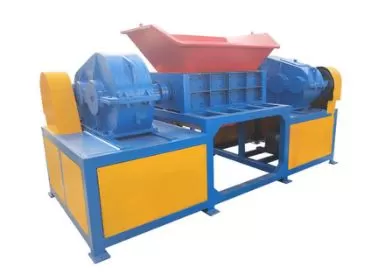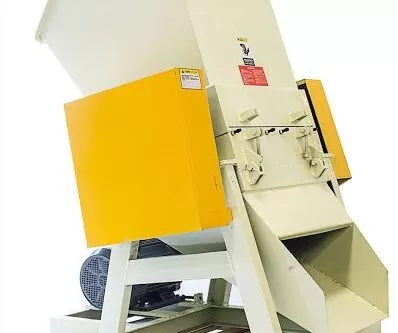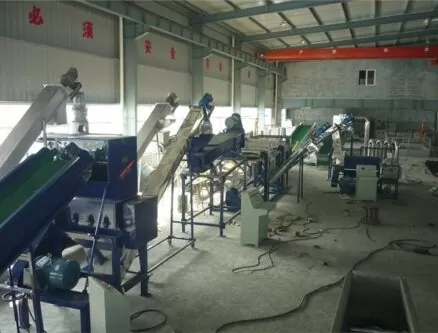Plastic is everywhere. It’s in our coffee cups, car parts, and even our clothes. But the world is drowning in plastic waste, and traditional recycling just isn’t cutting it anymore. As the CEO of a company knee-deep in shredders and pulverizers, I’ve seen firsthand the chaos and the opportunities. The big question remains: how do we recycle plastic efficiently before it chokes our planet?
The most efficient way to recycle plastic is through advanced mechanical recycling, especially using high-performance shredding and sorting systems that reduce contamination, increase output purity, and lower energy consumption.
And yes, we’ve got machines that do just that—and they don’t complain about overtime.
Curious how this works in real life? Let’s slice it up, Amige-style.

Why is mechanical recycling still king?
There’s a reason mechanical recycling still dominates the industry. It’s cost-effective, scalable, and works well with common plastics like PET, HDPE, and PP.
At Amige, our shredders and granulators are the heart of the process. These machines crush plastic waste into uniform flakes, which can then be washed, sorted, and reprocessed into pellets.
The trick? Consistent output size and minimal thermal damage. Our twin-shaft shredders operate at low speeds but deliver torque like a gym rat on espresso. That means high efficiency, less noise, and longer machine life.
And guess what? Mechanical recycling has an energy footprint that’s 80% lower than producing new plastic from fossil fuels.
Is chemical recycling the future or just marketing hype?
Now don’t get me wrong—I love a good tech buzzword. But chemical recycling? It’s a mixed bag.
Sure, it sounds sexy. Breaking plastics back into monomers and oils via pyrolysis or gasification? Science fiction vibes. But it’s expensive, energy-intensive, and often emits more carbon than it saves.
Only a few facilities globally have scaled this successfully. And trust me, I’ve seen enough pilot plants fail to know: efficiency isn’t about promise, it’s about delivery.
That said, chemical recycling has its place, especially for multilayer or heavily contaminated plastics. But for your average shampoo bottle? Stick with shredding.

How important is sorting in all this?
Sorting is the unsung hero of plastic recycling. You can have the best shredder in the world (hi, that’s us), but if you’re feeding it a mess of mixed plastics, expect garbage in, garbage out.
Modern MRFs (Materials Recovery Facilities) now use optical sorters, near-infrared scanners, and even AI vision systems to separate plastics by polymer type and color with up to 95% accuracy.
We integrate these with our systems for a seamless process. Think of it like a dance: the sorter leads, the shredder follows, and together, they make clean, uniform plastic flakes ready for rebirth.
Can plastic shredding reduce contamination?
Oh, absolutely. A good shredder is like a chef with knife skills—it doesn’t just cut, it preps the meal.
Contamination is the enemy of efficient recycling. Labels, dirt, food residue, and even incompatible plastic types can ruin batches. That’s why we use wet shredding, where water is introduced during shredding to pre-wash the material and reduce contamination upfront.
Our custom blades can slice through rigid plastics, flexible films, and even injection-molded parts without smearing or melting. That’s key because melted contaminants can gum up downstream extruders like bubblegum in a VCR (yes, I’m that old).
What about energy usage—can we make recycling greener?
Oh yes. Efficiency isn’t just about the plastic—it’s about the process.
Our machines are designed with variable frequency drives (VFDs) and smart load sensors. That means they only use the energy they need, when they need it.
On top of that, recycling one ton of plastic saves about 5,774 kWh of energy compared to producing virgin plastic.
We also integrate solar into many of our client facilities. So yes, we’re making the recycling process cleaner while cleaning up the planet. That’s a double win.

What role do consumers play in efficient recycling?
This might surprise you, but efficiency starts at the bin.
If people don’t sort right, don’t rinse containers, or mix recyclables with trash—everything downstream suffers. Our shredders can’t magically turn a ketchup-covered bottle into a clean pellet. (Although, give me a few more years…)
Education, clear labeling, and public awareness are essential. That’s why we often partner with municipalities for outreach programs.
And just a heads-up: if you’ve ever tossed a greasy pizza box into a recycling bin, you owe me one.
Is there such a thing as zero-waste recycling?
We’re getting close.
Thanks to innovations in design-for-recycling, biodegradable plastics, and closed-loop systems, some facilities operate with less than 2% residual waste.
At Amige, we push for circularity. That means working with manufacturers upstream to design products that are easier to shred and recycle. It’s all about alignment: from product to disposal, everything should speak the same language.
Imagine a future where every piece of plastic has a second life—efficiently, cleanly, and locally. That’s not a dream. That’s our roadmap.
What’s the smartest investment for recyclers?
If you ask me—and you did—the smartest investment is in automation and smart shredding systems.
Why? Because labor costs are rising. Contamination is increasing. And regulations are getting stricter. You can’t solve 21st-century problems with 20th-century machinery.
Our latest shredders come with real-time monitoring, blade wear alerts, and auto-stop safety features. Some even connect to your phone. That’s right—you can get a push notification if a bearing is overheating or if someone fed it a bike handlebar (true story).

Bottom line? Efficiency is about integration, speed, and smart controls. Not brute force.
Conclusion
The most efficient way to recycle plastic combines smart shredding, proper sorting, and clean inputs. And yes, a little Amige magic doesn’t hurt either.
